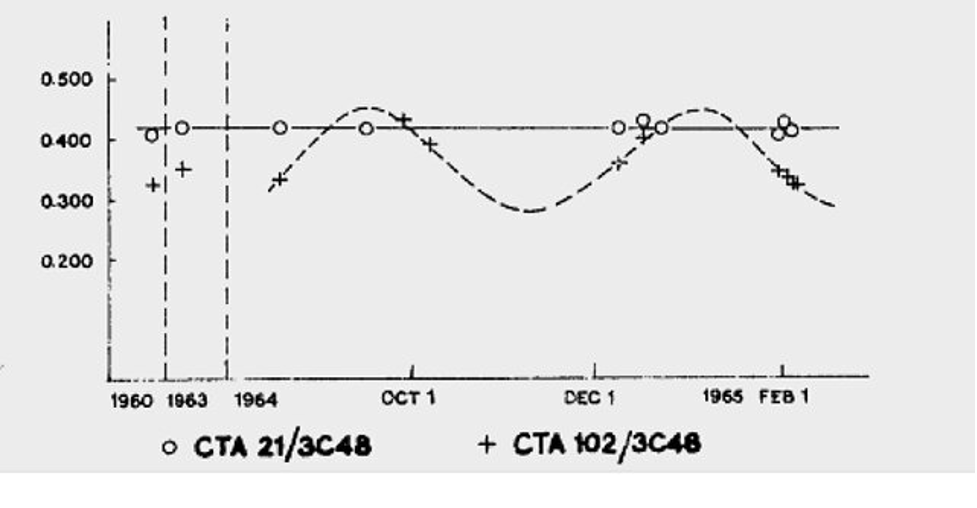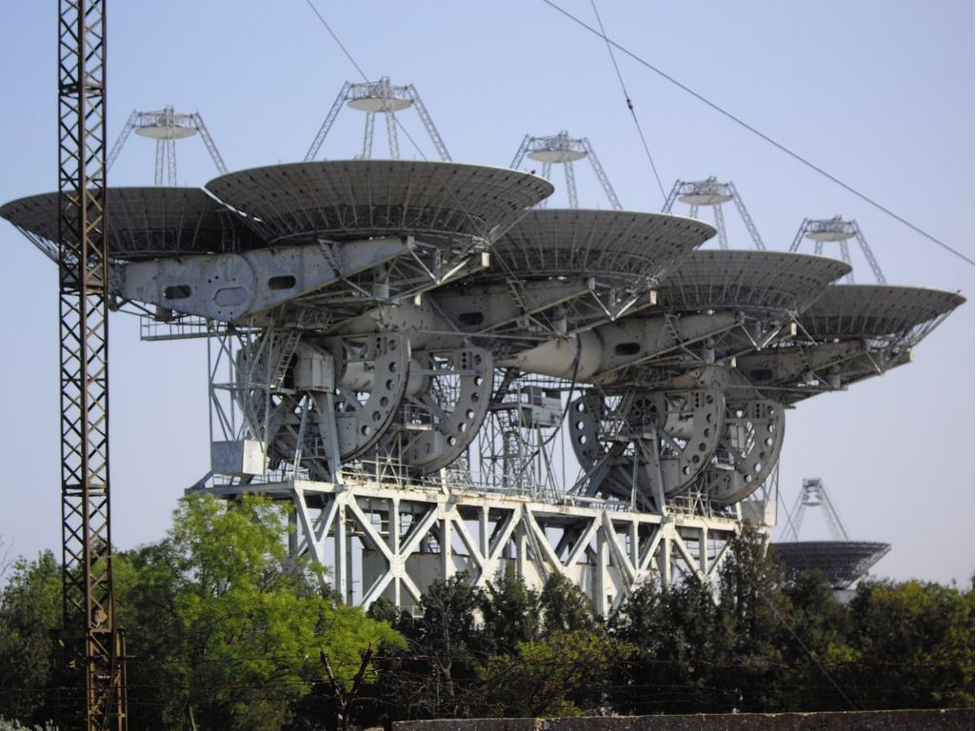This Month in Astronomical History: April 2023
Rebecca Charbonneau National Radio Astronomy Observatory (NRAO)
 Each month as part of this series from the AAS Historical Astronomy Division (HAD), an important discovery or memorable event in the history of astronomy will be highlighted. This month, author Rebecca Charbonneau writes about the discovery of radio star CTA-102. Interested in writing a short (500-word) column? Instructions along with previous history columns are available on the HAD web page.
Each month as part of this series from the AAS Historical Astronomy Division (HAD), an important discovery or memorable event in the history of astronomy will be highlighted. This month, author Rebecca Charbonneau writes about the discovery of radio star CTA-102. Interested in writing a short (500-word) column? Instructions along with previous history columns are available on the HAD web page.
The Global Controversy Surrounding the Detection of Radio Variability in CTA-102
During the 240th meeting of the American Astronomical Society’s Historical Astronomy Division, then-HAD Chair Kevin Krisciunas presented a slide that stated: "One could consider that the purpose of the Historical Astronomy Division is to give credit where credit is due for discoveries of the past." Establishing credit for discoveries has long been an issue of great importance to astronomers, but it has also been fraught with conflict and controversy. This was especially true during the Cold War period when there were many barriers to scientific communication that sometimes complicated proper attribution of discovery.
Such was the case with the discovery of extrasolar radio variability. In 1964, Gennadii Sholomitskii, a graduate student in the Union of Soviet Socialist Republics (USSR), used the Soviet deep space tracking antenna in Yevpatoria to observe a source called CTA-102. He claimed to have discovered radio variability in the source “at 30 cm wavelength with a period of about 100 days”.1 Sholomitskii’s discovery had the potential to make a great impact on the field, transforming our understanding of the radio universe, which until that point was believed to be less mutable than other parts of the electromagnetic spectrum.1 In 1964 astronomers were stunned by the claim of radio source that varied over periods measured in days, when even a period of years would have required extraordinary evidence. In the spring of 1965, Sholomitskii announced his discovery through a telegram submitted to the Information Bulletin on Variable Stars, and it quickly garnered skepticism from astronomers in the United States.2,3
While radio astronomy observatories in the US were largely civilian or university organizations (despite at least some relationship with the military or government), in the USSR radio astronomy facilities were state institutions. Therefore, many Soviet scientific publications were heavily redacted or censored, making it difficult for scientists in the West to understand or verify claimed results. This was true for Sholomitskii’s publication, which withheld key information about his observations. Sholomitskii’s telegram was upheld as an example of why Soviet science was untrustworthy, further cementing a culture of distrust among scientists on opposite sides of the Iron Curtain.
In fact, one American astronomer (and current HAD member), Kenneth Kellermann, wrote in 1968: “[although the] implications of Sholomitskii’s discovery were clearly very great . . . little is known about the antenna or radiometer system used.” And as a consequence, “his results have generally not been accepted” by astronomers in the United States.
It was not until radio variability became generally accepted several years later, due to observations of other sources by Western scientists, that it was confirmed CTA-102 did indeed vary at the scales reported by Sholomitskii. The situation with CTA-102 highlights the barriers to communication between Soviet and American astronomers during the Cold War, causing frustration to scientists, especially those who did not receive credit for their discoveries due to their limited ability to communicate their full results.
Interestingly, the detection of variability in CTA-102 led to the first false alarm in the history of the search for extraterrestrial intelligence on 12 April 1965.

Fig. 1: Sholomitskii's published variability data. Sholomitskii, G. B. "Variability of the Radio Source CTA-102." Information Bulletin on Variable Stars, no. 83 (1965).

Fig. 2: The Pluton Array of the Deep-Space Communication Center in Yevpatoria, Crimea, USSR. Photo courtesy of Leonid Gurvits.

Fig. 3: Gennadii Sholomitskii. Photo courtesy of Leonid Gurvits.
References
- Sholomitskii, G. B. (1965). "Variability of the Radio Source CTA-102." Information Bulletin on Variable Stars, no. 83.
- At this point in radio astronomy history, the only known source of extrasolar radio variability was in the supernova remnant Cass A, which was only variable in the sense that it decreased in luminosity over time. Sholomiskii’s discovery was the first known case of intrinsic, periodic variability outside our solar system.
- Kellermann, Kenneth. (1968). “Variable Radio Sources,” Annual Review of Astronomy and Astrophysics, vol. 6.
Further Reading
Charbonneau, Rebecca. (2021). Mixed Signals: Communication with the Alien in Cold War Astronomy. Doctoral Thesis, Christ’s College, University of Cambridge, UK.

